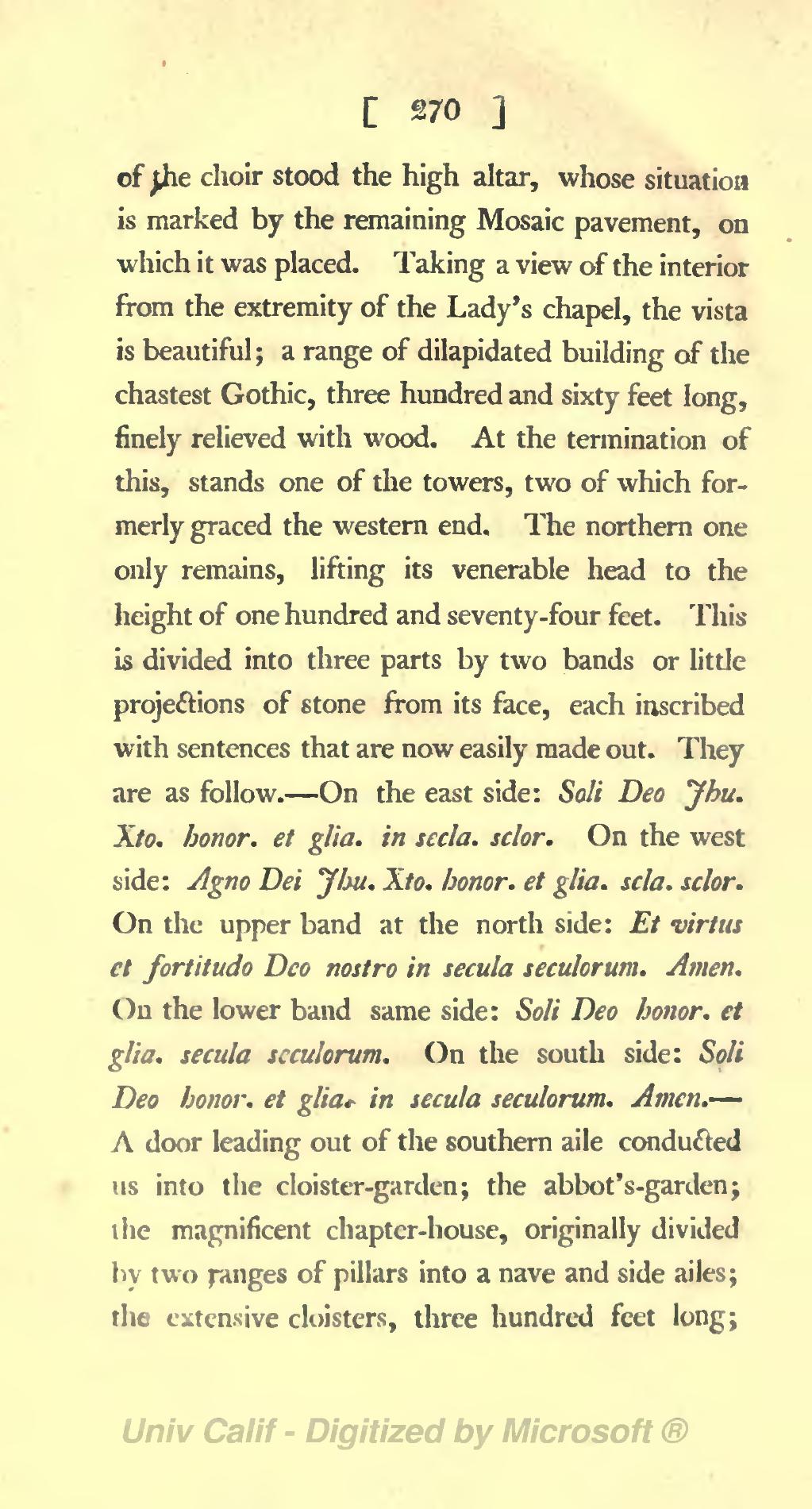[270]
of the choir stood the high altar, whose situation is marked by the remaining Mosaic pavement, on which it was placed. Taking a view of the interior from the extremity of the Lady's chapel, the vista is beautiful; a range of dilapidated building of the chastest Gothic, three hundred and sixty feet long, finely relieved with wood. At the termination of this, stands one of the towers, two of which formerly graced the western end. The northern one only remains, lifting its venerable head to the height of one hundred and seventy-four feet. This is divided into three parts by two bands or little projections of stone from its face, each inscribed with sentences that are now easily made out. They are as follow. —On the east side: Soli Deo Jhu. Xto. honor. et glia. in secla. sclor. On the west side: Agno Dei Jhu. Xto. honor, et glia. scla. sclor. On the upper band at the north side: Et virtus et fortitudo Deo nostro in secula seculorum. Amen. On the lower band same side: Soli Deo honor, et glia. secula seculorum. On the south side: Soli Deo honor, et glia. in secula seculorum. Amen.—A door leading out of the southern aile conducted us into the cloister-garden; the abbot's-garden; the magnificent chapter-house, originally divided by two ranges of pillars into a nave and side ailes; the extensive cloisters, three hundred feet long;
